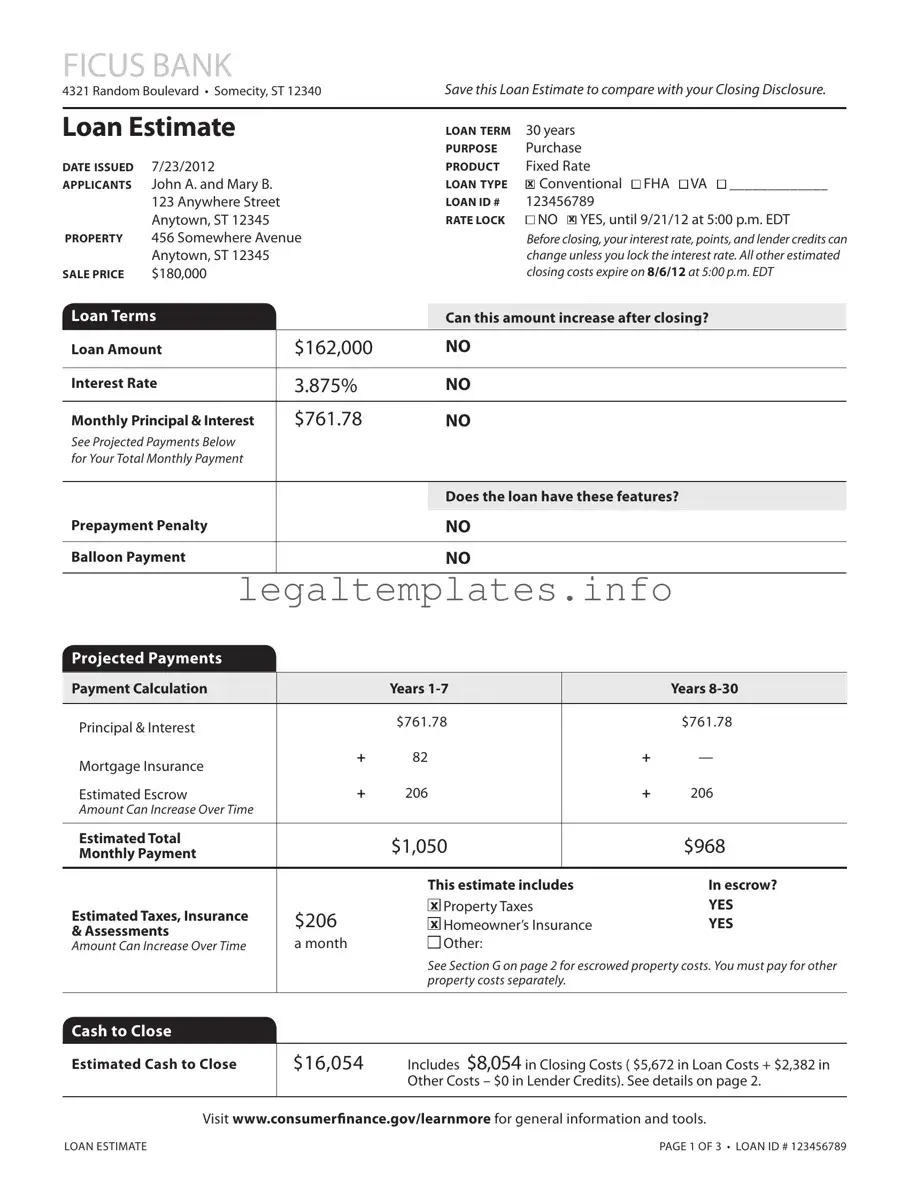The Good Faith Estimate (GFE) form is closely related to the Loan Estimate form, as both serve the purpose of providing borrowers with a detailed breakdown of estimated closing costs and loan terms. The GFE, however, was the standard form before the Loan Estimate was introduced under the TILA-RESPA Integrated Disclosure (TRID) rules. Though no longer in use, it offered a similar initial overview of mortgage charges, aiming to facilitate comparison shopping among lenders.
The Closing Disclosure form shares significant similarities with the Loan Estimate, primarily in content and purpose, but is provided closer to the closing of the mortgage transaction. While the Loan Estimate gives an early estimate of loan terms and costs, the Closing Disclosure confirms the final costs, terms, and other critical details about the mortgage. This document is crucial for borrowers to review before the finalization of the loan, allowing them to verify that the terms have not changed unfavorably.
The HUD-1 Settlement Statement, though replaced by the Closing Disclosure form for most residential real estate transactions, used to serve a similar function by itemizing all charges imposed upon borrowers and sellers in connection with the settlement. The HUD-1 was primarily used in transactions not covered by the TRID rules, such as reverse mortgages or mortgages secured by mobile homes or dwellings not attached to real estate.
The Truth in Lending Act (TILA) disclosure is designed to inform borrowers of the costs and terms of credit, providing details like the annual percentage rate (APR), finance charge, amount financed, and total of payments. Although it shares the common goal of borrower enlightenment with the Loan Estimate, the TILA disclosure focuses more on the finance charges and APR rather than itemized closing costs.
The Mortgage Servicing Disclosure Statement outlines the servicer’s policy on transferring servicing rights for the loan. This disclosure, while not detailing loan costs or terms specifically, is akin to the Loan Estimate in its aim to inform borrowers about significant administrative aspects of their mortgage, such as whether their loan payments might be managed by a different company in the future.
The Annual Escrow Statement, although specific to the accounting of funds placed in escrow rather than loan costs or terms, shares a common theme with the Loan Estimate by detailing future housing-related expenses. It provides an annual account of escrow payments for property taxes, homeowners insurance, and other charges, helping borrowers manage and anticipate their housing-related spending.
The Initial Escrow Statement resembles the Loan Estimate by detailing the expected costs to be paid from the escrow account during the first year of the mortgage. It itemizes the insurance premiums, taxes, and other charges that the lender will pay on behalf of the borrower, thus ensuring that these crucial bills are paid on time and helping the borrower budget for these expenses.
The Appraisal Disclosure is related to the Loan Estimate as it informs the borrower of their right to receive a copy of any appraisal performed on the property and the purpose of the appraisal. While the Loan Estimate lists fees associated with obtaining an appraisal, the Appraisal Disclosure focuses specifically on the borrower's rights regarding its review and the role of the appraisal in lending decisions.
The Affiliated Business Arrangement (AfBA) Disclosure is required when a settlement service provider involved in a real estate transaction refers the consumer to an affiliate for another settlement service. Like the Loan Estimate, it aims to inform consumers about potential costs and relationships that could affect the transaction, ensuring transparency.
The Right to Rescind notice is primarily associated with refinances, home equity loans, or lines of credit on a person’s primary residence, providing borrowers a window to cancel the contract without penalty. Although distinct in purpose from the Loan Estimate, it plays a crucial role in informing borrowers of their rights and is a key document in promoting borrower awareness and protection in the lending process.



